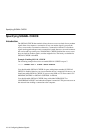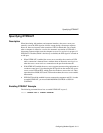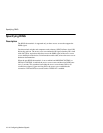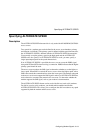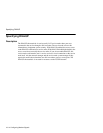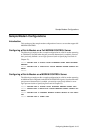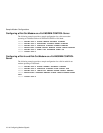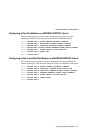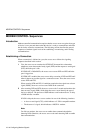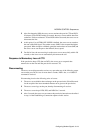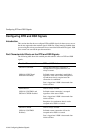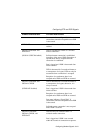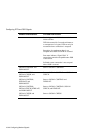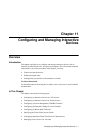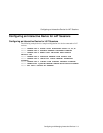
MODEM CONTROL Sequences
10-18 Configuring Modem Signals
MODEM CONTROL Sequences
Introduction
Modem-controlled communication requires that the access server recognize what type
of device is on a port and detect when this device is ready to communicate and when
the device has ceased to communicate. The following section describes the general
sequences of modem signals involved in establishing, in monitoring, and in ending
communications.
Establishing a Connection
When a connection is initiated at a port, the access server follows the signaling
sequence described in this section.
1
First, the access server examines the DTRWAIT characteristic to determine
whether to assert data terminal-ready signal (DTR) and the request-to-send signal
(RTS) while the port is idle.
If DTRWAIT is DISABLED, the access server asserts DTR and RTS while the
port is logged out.
If DTRWAIT is enabled, the access server delays assertion of DTR and RTS until
either it detects any modem signal or a connection occurs. Then, the access server
asserts DTR and RTS.
When asserting DTR and RTS, if conditions require the data-signal-rate-selector
signal (DSRS), the access server asserts DSRS at the same time.
2
After asserting DTR and RTS, the access server waits 2 seconds and monitors the
data-set-ready signal (DSR), which helps the access server identify the type of
device on the port. The presence of DSR indicates a null modem device. A delay
of DSR indicates a modem.
If DSR is delayed, the access server watches for one of the following situations:
— A clear-to-send signal (CTS), which indicates a V.25/bis compatible modem.
— The absence of a signal, which indicates a DIGITAL modem.
Note
For dial-out modems, the access server enables data communication before
detecting DSR. Otherwise, the access server waits until detecting DSR to enable
data communication.



